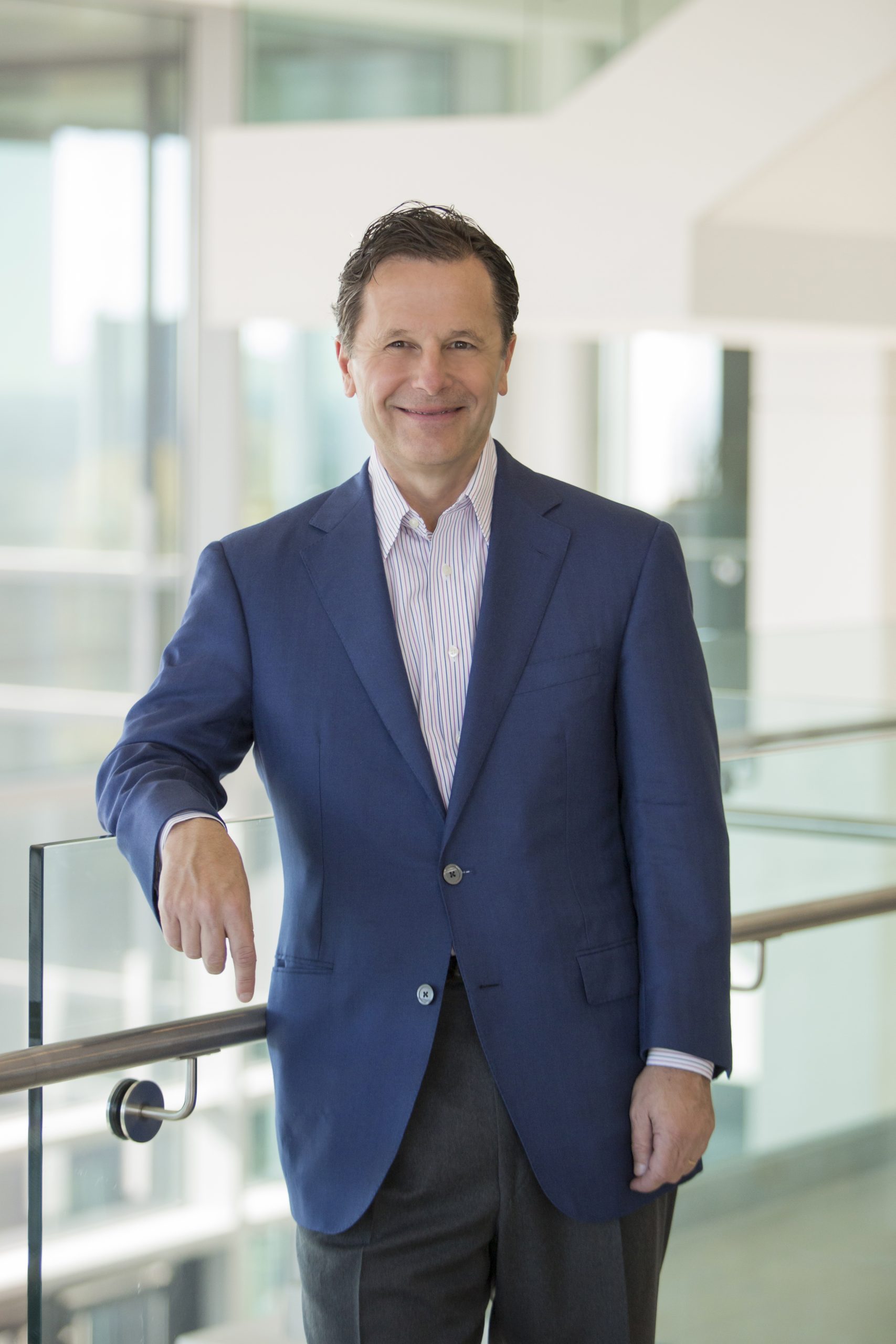Paying it Forward: Terry Brown of Asana Partners
I think one of the most impressive things someone can do in their career is pursue a new passion outside of their comfort zone after doing the same or similar thing(s) for decades. Peter Drucker (father of management thinking) wrote one of my favorite Harvard Business Review articles called Managing Oneself. In it, he talks about this idea and how one can re-invent themselves for the second part of their life and career. Unfortunately, many people aren’t proactive enough earlier in their lives to set themselves up to pursue what he likes to call “second life endeavors”. Drucker says,
“People who manage the second half of their lives may always be a minority. The majority may “retire on the job” and count the years until their actual retirement. But it is this minority, the men and women who see a long working-life expectancy as an opportunity both for themselves and for society, who will become leaders and models.”
I had the great pleasure of spending time with a wildly successful commercial real-estate executive who is in the midst of living out his second life endeavor. As impressive as his accomplishments were at major large organizations earlier in his career, starting his own venture (that has also happened to be wildly successful) resonates with me on a different level. Sure, I’m biased. I love stories of entrepreneurs starting things from scratch and creating value for others in the process more than the average person. However, when you meet someone who created their business to help other people and future generations of industry professionals be successful, you cannot not be inspired by their pursuits.
Meet Terry Brown, Managing Partner and Co-Founder of Asana Partners, a fast-growing retail real estate private equity investment platform that owns some of the more distinct retail properties across the U.S., including those in Atlanta. Terry achieved incredible success at Arthur Andersen, becoming the CEO of Andersen’s U.S. Merger & Acquisitions Subsidiary – and then with EDENS, one of the largest retail real estate companies in the U.S., as its Chairman and CEO for 13 years. To the average person, finishing his or her time as CEO of one of the largest institutionally capitalized real estate companies in the U.S. might have led to years of relaxation, travel, golf, etc. For Terry, at age 53, he wanted much more. His desire to position others for success and to inspire young professionals led him to re-invent himself and take on a challenge he had never experienced before: starting a business from scratch. Now, in less than five years, this business (started from scratch) has raised more the $2.0 billion of equity for investment and has invested more than $3.5 billion in real estate in more than 40 urban neighborhoods across the country.
We sat down with Terry to hear more about his experience running companies both large and small and some of the lessons he’s learned along the way through leading others and investing in future opportunities. Fortunately for all of us, our transcript below is a picture into an incredibly wise business mind and forward-thinking leader in the commercial real-estate industry.

Managing Partner and Co-Founder – Asana Partners
Charlotte, NC
Tell me a little bit about your upbringing and how that influenced your desire to do what you’re doing now?
I was born and spent my childhood years in Elberton, a small town in Northeast Georgia. No one in my family had ever gone to college. My father was with the postal service for more than 45 years, and my mother was a stay at home mom. It was always important to my parents that I stay focused and accomplish those things neither of them had the opportunity to achieve. And so, my father pushed me aggressively early on to set goals, to achieve, and work harder than others at everything. My parents also infused in me a belief that if I did those things, I could outcompete, outperform and succeed at whatever I dared to dream.
As importantly, my parents really believed in serving others and treating people in all walks of life well. Elberton is a small town. Community is important; a person’s reputation is everything; taking care of other people is really important; family is important; and being spiritually grounded is critical. In fact, my basic core values were instilled in me long before I left Elberton for college.
Growing up in Elberton, the only people there that had great educations, who traveled and were financially secure, were doctors and lawyers. So instinctively I believed the right professional path for me was to become a doctor. I went to the University of Georgia to study pre-med until I realized that I could not handle the sight of blood. As I gained an understanding of all of the professional opportunities in the business field, I quickly switched my major.

How old were you when you started at Arthur Andersen?
I went to UGA on an Army ROTC scholarship and it was a great way to pay for college. After graduating from UGA, I completed my active duty service obligation at Fort Sill, Oklahoma, and then returned to work at Arthur Andersen in Atlanta.
My undergraduate degree was in accounting, but I had no idea what I wanted to do (I would argue at 57, I still don’t really know what I want to do). Accordingly, I always took an approach of leaving as many professional doors open as possible. Arthur Andersen created more opportunities than I could ever have envisioned when I began. Quickly I discovered, or at least my supervisors did, that I was not a very good accountant – when you have ADD, accounting is a tough discipline in which to excel. I also discovered that I had much more of a passion for strategy, business, finance, and organizational development.
After a few years at Andersen, I transferred into a new business the firm was launching globally. The new area would provide merger and acquisition and capital markets advice to middle market clients on a global basis. I was one of the first people inserted into this new division – and certainly the most inexperienced – but it provided an amazing platform for me to grow professionally. Over time Anderson named me CEO of the U.S.-based broker-dealer organization and part of the global executive team of a business that grew to more than 1,500 professionals.
I was fortunate at Andersen to have several mentors over the course of my tenure that took a very active, personal interest in me. I frequently tell people, “No one is smart enough in life to succeed without the help of many others.” There are a few Bill Gates or Steve Jobs types, but I certainly was not one of those. I was the beneficiary of the inculcated training and mentoring culture at Andersen. It was my first view of generational succession and sustainability.
During my 17 years at Andersen, it seemed like I had 10 different professional roles. I never for a day felt that I was not learning and growing, personally and professionally. Many people around me helped me succeed there – most of whom I remain close friends with today.
So, fast forward a little bit, you move into a role as the CEO of EDENS. How did that come about?
Starting in 1994, EDENS was one of my clients at Andersen. I worked directly with the CEO/Founder between 1994 and 2002, advising the company on a number of large transactions to raise institutional capital to recapitalize and grow the company. Over those years, I developed a strong relationship with him, gaining his trust and earning credibility. In late 2001, when he was 60, he asked me to succeed him as CEO to develop a new strategic plan and create value for the shareholders.
As the opportunity with EDENS was developing, Andersen began to unravel in the wake of the Enron scandal. It was clear to me that I would need to move on to a new opportunity. Doing so with a Founder/CEO who was a known commodity and a company that I knew well from the outside seemed the most logical to me.
Also, as much as I loved Andersen, the pace and especially the international travel was starting to take a toll on my health and life at home. So the opportunity to move to a bit smaller city and exit the client service business (because clients really control your time) was attractive. Furthermore, the ability to focus my energy on creating strategy, rebuilding and transforming an already successful organization and yet have more control over my own schedule was important. All of this made the move to EDENS an easy decision. Because I was so intimately involved with the company, I knew exactly what I was walking into. I had a strong sense of what we should do strategically to change directions, elevate our game, build a generationally sustainable business, and create much more value for our stakeholders.





You must be logged in to post a comment.